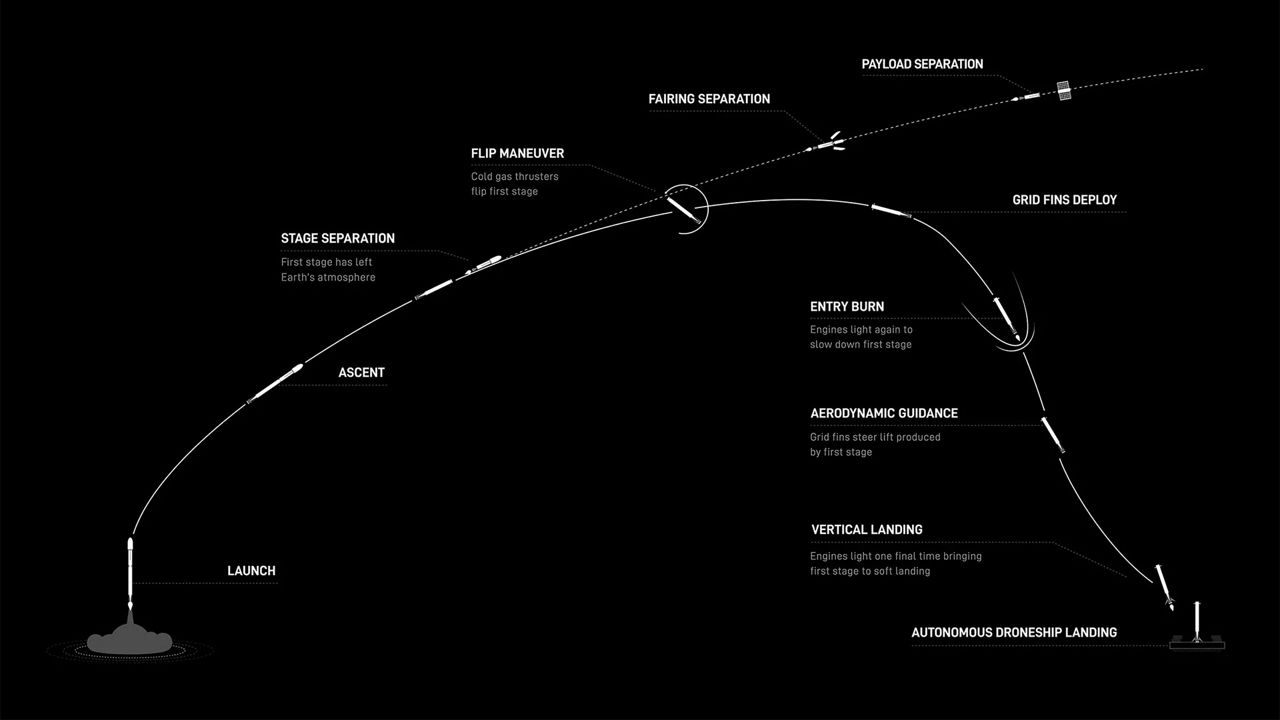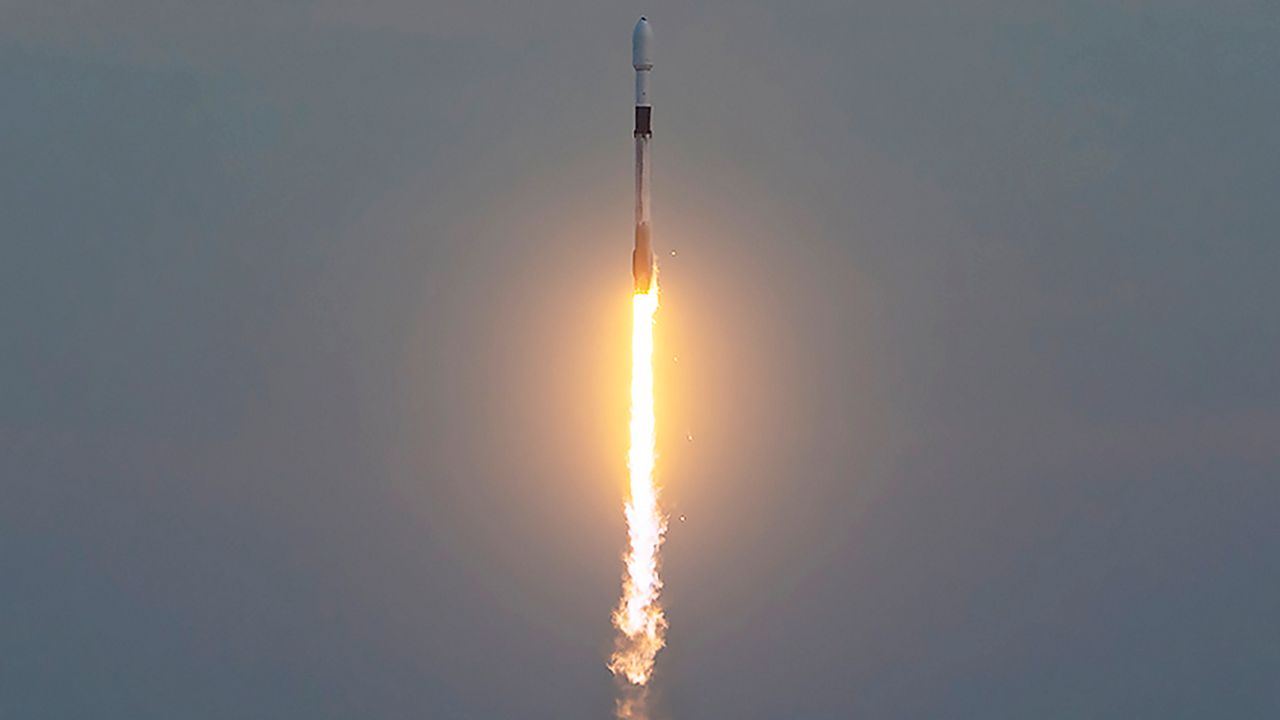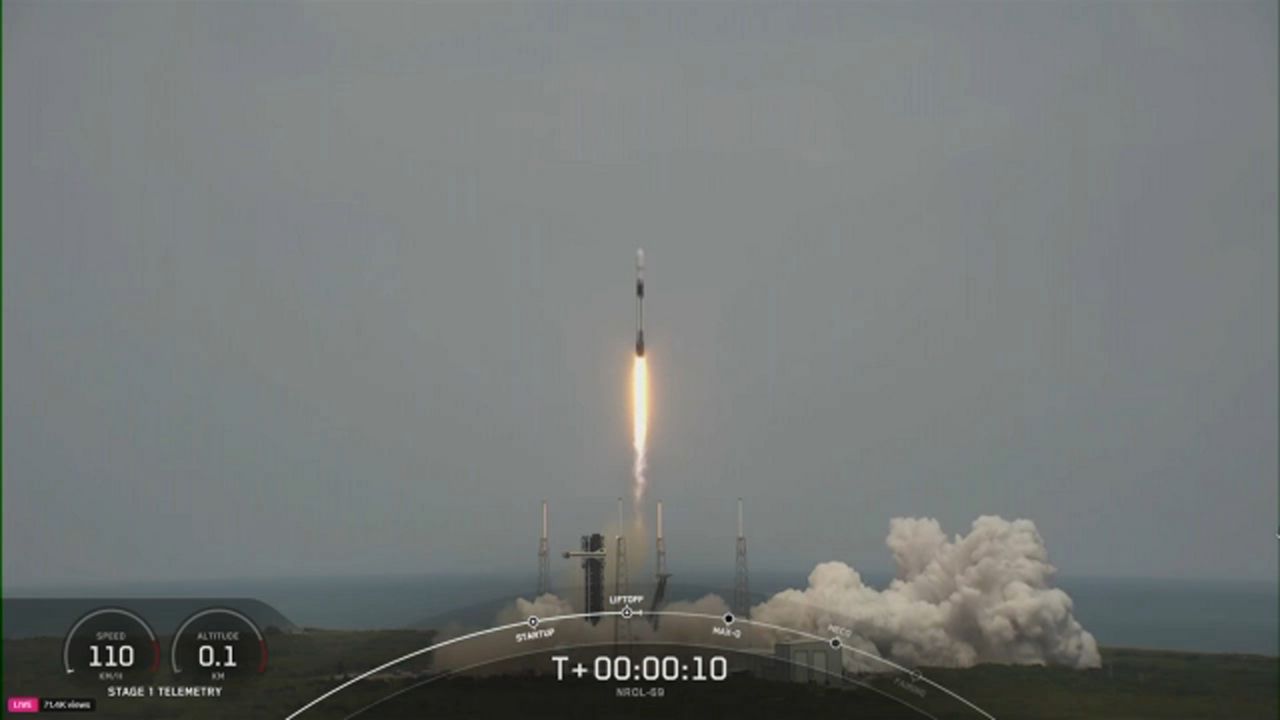CAPE CANAVERAL SPACE FORCE STATION — Thanks to daylight savings time, skywatchers had some light to see SpaceX send up more than 20 Starlink satellites on Sunday night.
What You Need To Know
- The launch window opened at 7:05 p.m. ET
- The Starlink 6-43 mission left Space Launch Complex 40 at Cape Canaveral Space Force Station
- Get more space coverage here ▶
SpaceX’s Falcon 9 lifted the Starlink 6-43 mission off from Space Launch Complex 40 at Cape Canaveral Space Force Station, confirmed the company.
The nearly four-hour launch window opened at 7:05 p.m. ET and it had backup attempts will go until 10:21 p.m. ET. Earlier on Sunday, SpaceX stated the launch window would end at 11:03 p.m. ET.
Earlier in the day, Spectrum News meteorologist Zach Covey said the weather would be pretty good, with only a few concerns.
“With our cold front now safely to our south, weather at the cape looks to improve as the window time progresses. A few passing cumulus clouds will likely be the only concern at the Cape itself,” he stated.
If the launch was scrubbed, the next attempt would have been on Monday, March 11, at 6:42 p.m. ET.
Lifting off to low-Earth orbit
Named B1077, this Falcon 9 first-stage booster for the Starlink 6-43 mission has been around the block. Before this launch, it has 10 missions to its name.
- Crew-5
- GPS III Space Vehicle 06
- Inmarsat I-6 F2
- CRS-28
- Intelsat G-37
- NG-20
- Starlink mission 5-10
- Starlink mission 6-13
- Starlink mission 6-25
- Starlink mission 6-33
After the rocket’s stage separation, it landed on the droneship Just Read The Instructions, that is out in the Atlantic Ocean.
Falcon 9 has landed on the Just Read the Instructions droneship pic.twitter.com/BAulNJ2VGq
— SpaceX (@SpaceX) March 10, 2024
Covey warned that the recovery weather for the booster might have been an issue as the night went on.
“Booster recovery weather will become an issue as we go later on in the launch window as winds offshore of Florida pick up. Booster recovery will be on a droneship in the Atlantic where winds will likely gust above 30 mph, so weather will need to be monitored for recovery. That looks to be our only real issue today for launch,” according to Covey on Sunday morning.

Understanding the mission
SpaceX sent up 23 Starlink satellites into low-Earth orbit, where they will provide internet services to most parts of the round Earth, stated Starlink, a company owned by SpaceX.
Before the launch, Dr. Jonathan McDowell of Harvard-Smithsonian Center for Astrophysics recorded the following Starlink satellites.
- 5,548 are in orbit
- 5,487 in working order
- 5,128 are in operational orbit








